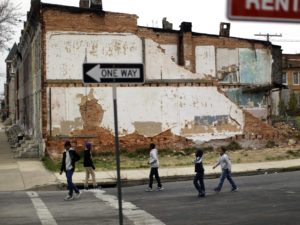
These disadvantages take effect at an early age and lay the foundation for racial disparities in health, education, incarceration rates, unemployment and even life expectancy for Black young people.
Years of research have noted that many Black children in low-income neighborhoods are left struggling to perform in the classroom, face serious health issues and soaring obesity rates and are far more likely to find themselves behind bars at an early age.
These kinds of advantage gaps have always plagued the Black community, and researchers at Brandeis University and Ohio State University believe they have more quantitative explanations as to why these problems persist.
According to their research, roughly 40 percent of Black children live in the lowest-opportunity neighborhoods across the nation’s largest 100 metro areas.
This is in stark contrast to the less than 10 percent of white children who faced the same fate.
The researchers used information provided by DiversityDataKids.org and a Child Opportunity Index to identify which areas would qualify as low-opportunity areas.
They also considered socioeconomic indicators such as foreclosure rates and access to efficient educational resources and basic health care needs.
So while the vast majority of white children have access to top-notch educational facilities and early childhood centers, many Black children in disadvantaged neighborhoods didn’t even have access to well-maintained parks, never mind quality health care facilities.

The low-opportunity neighborhood with the greatest amount of white children was Honolulu, Hawaii, with 23 percent of white children. This neighborhood was where the disadvantage problem was the most pervasive for white youths.
For Black youths, on the other hand, more than 60 percent of the Black children in Albany, New York, lived in the worst neighborhoods, where they had limited access to the types of resources that could prepare them to continue their education and compete in the job market.
Researchers believe the study proves that a disproportionately greater number of Black youths are being raised in low-income neighborhoods that immediately leave them playing a brutal game of catch-up with white children who never had to face the same obstacles.
Even when these youths are finally able to move out of the area, a 2008 study published in Proceedings of the National Academy of Science suggests that the disadvantages of spending most of their childhood in low-opportunity areas will follow them throughout their lives.


